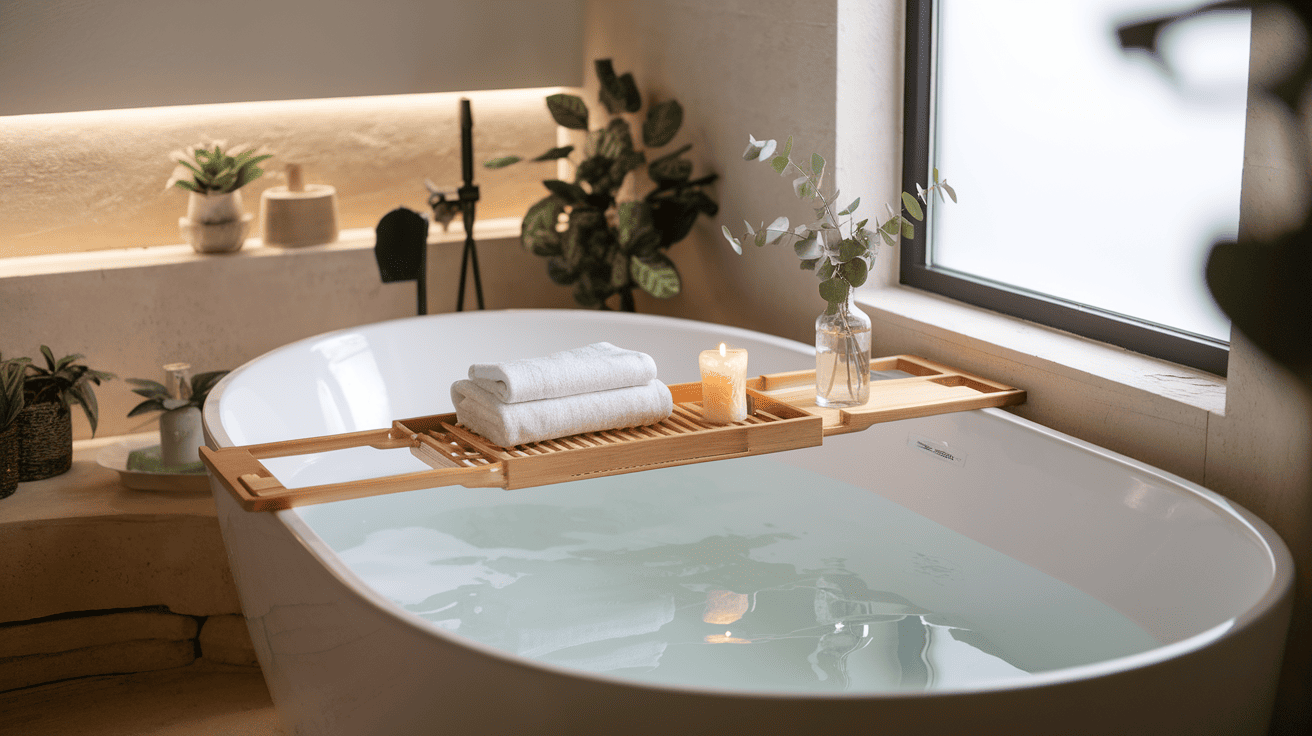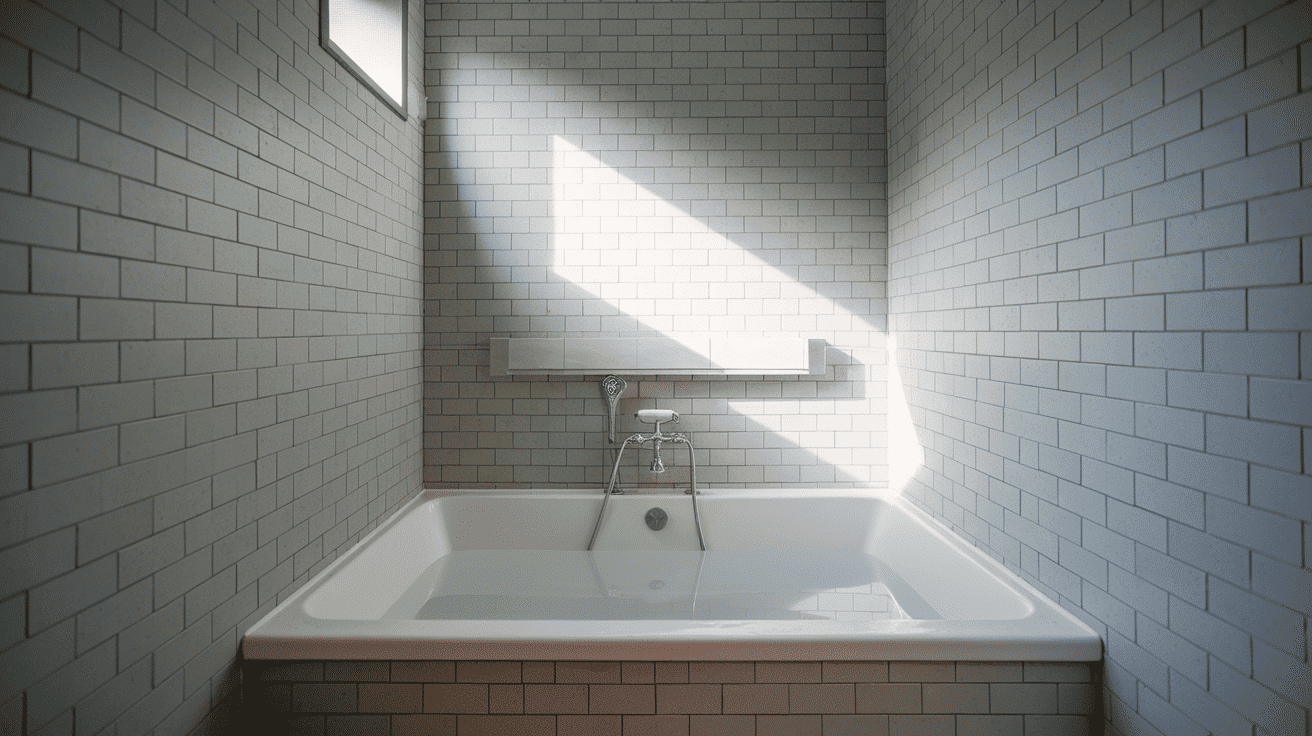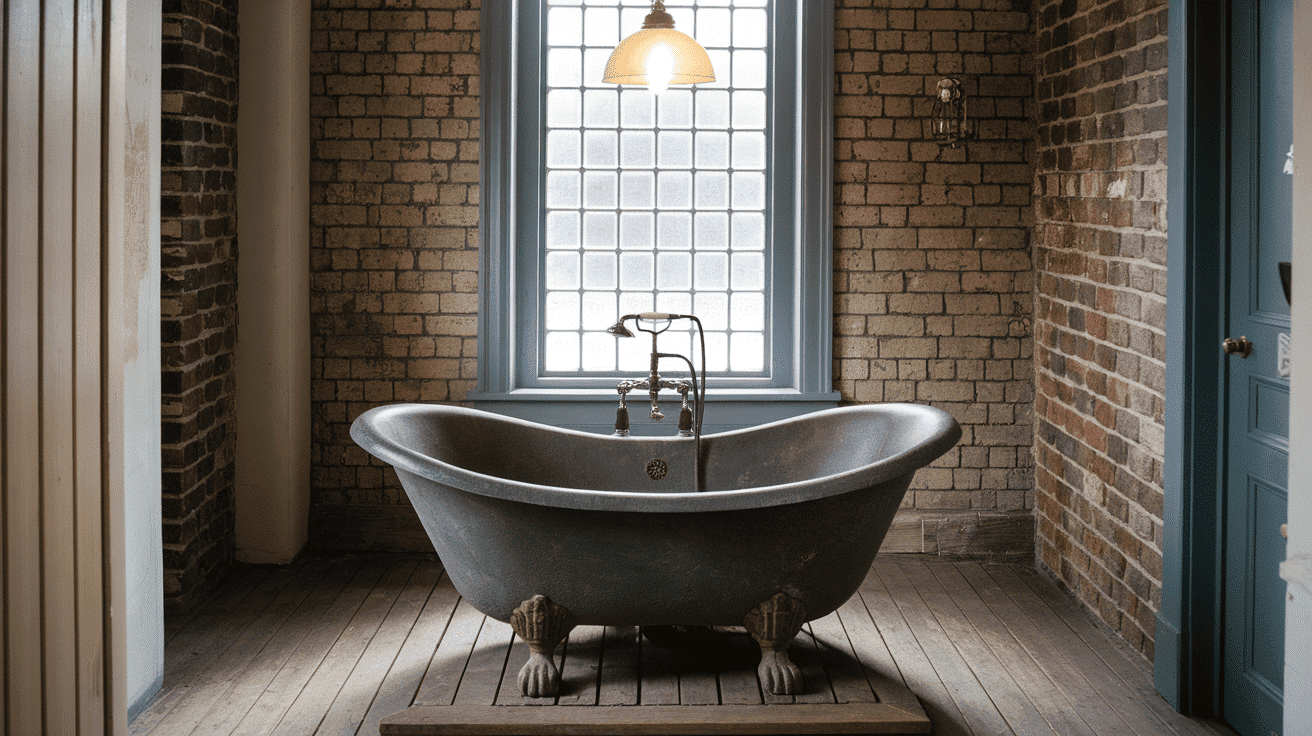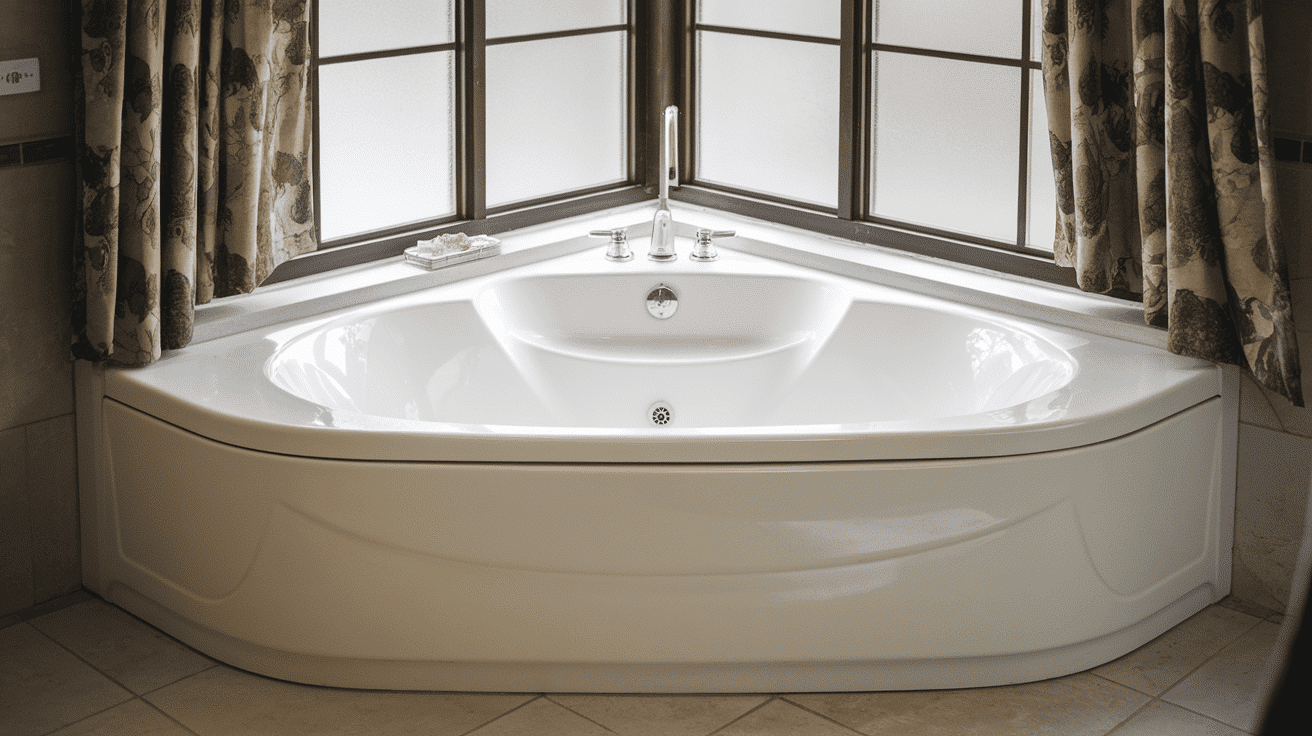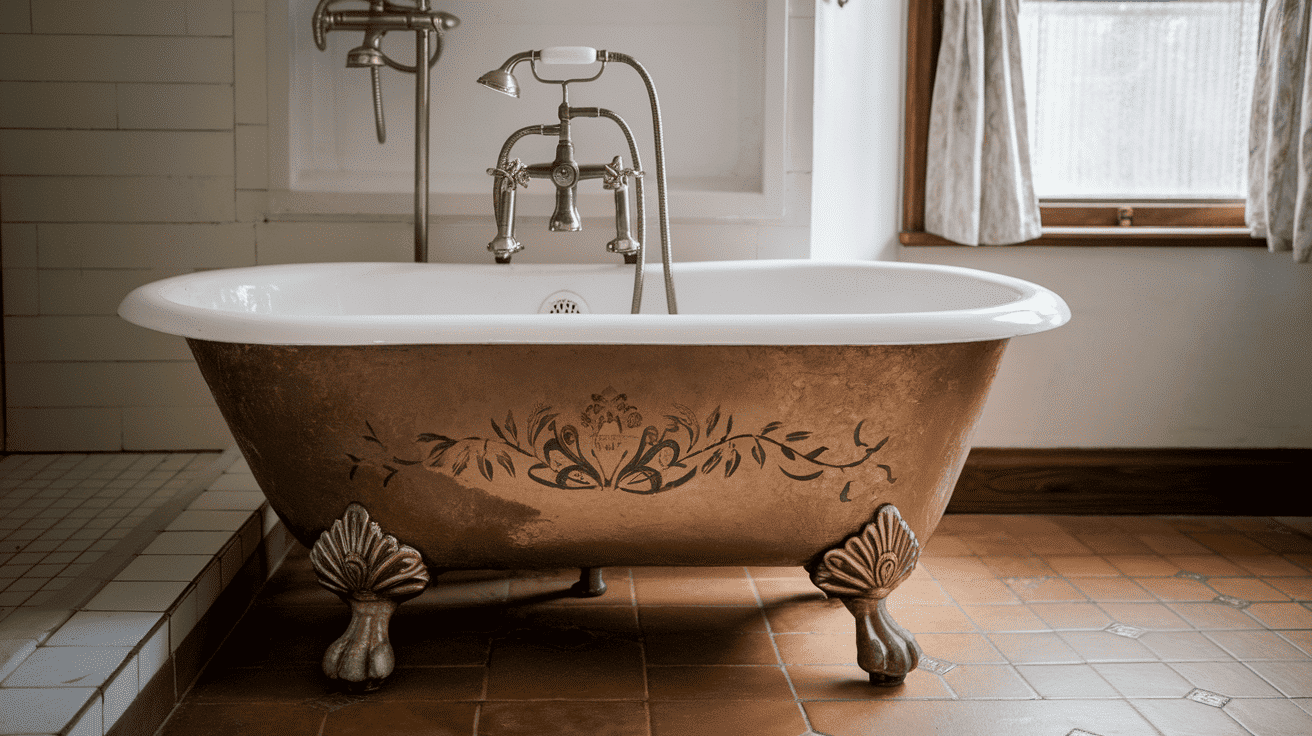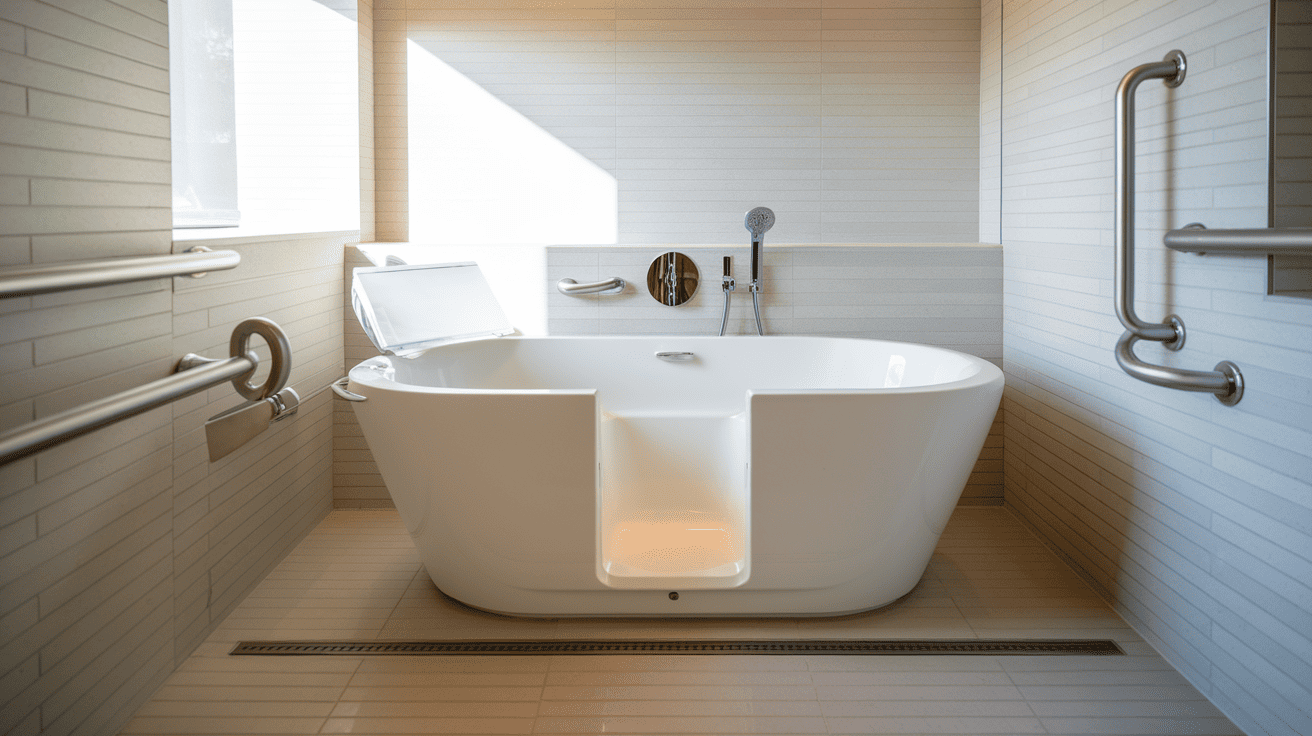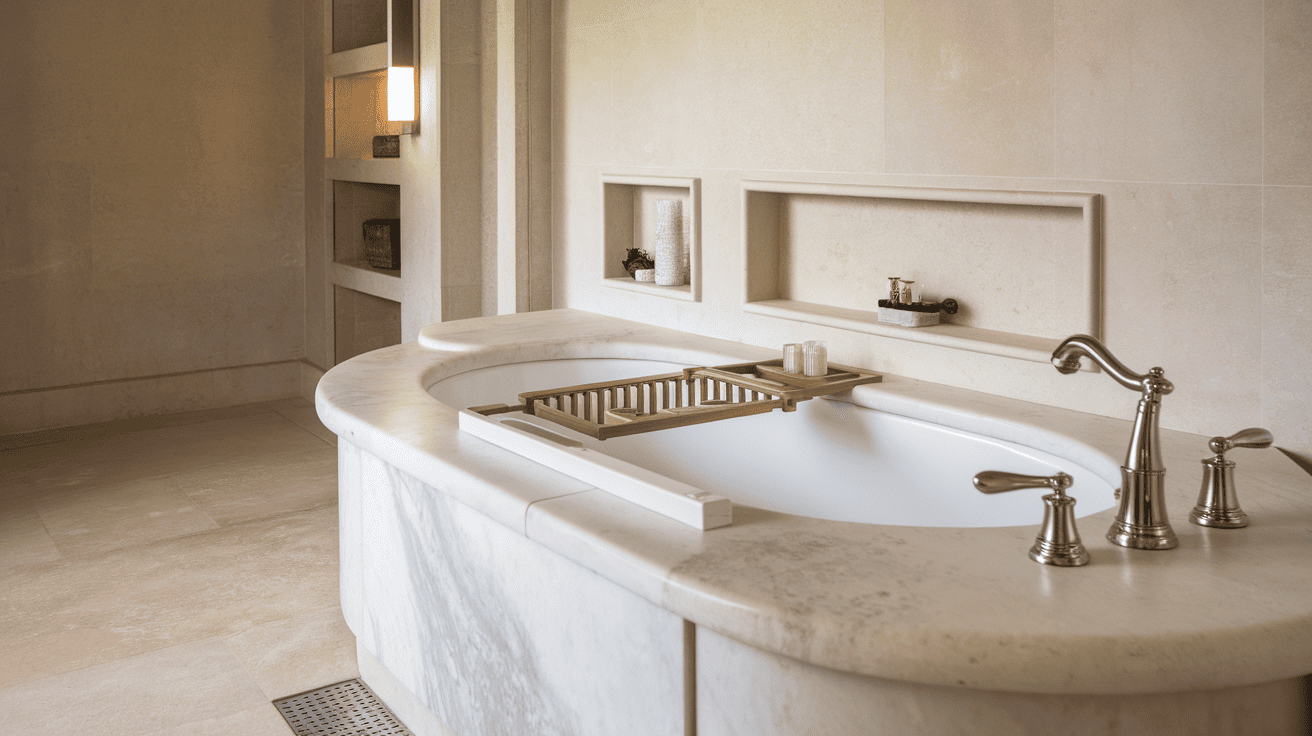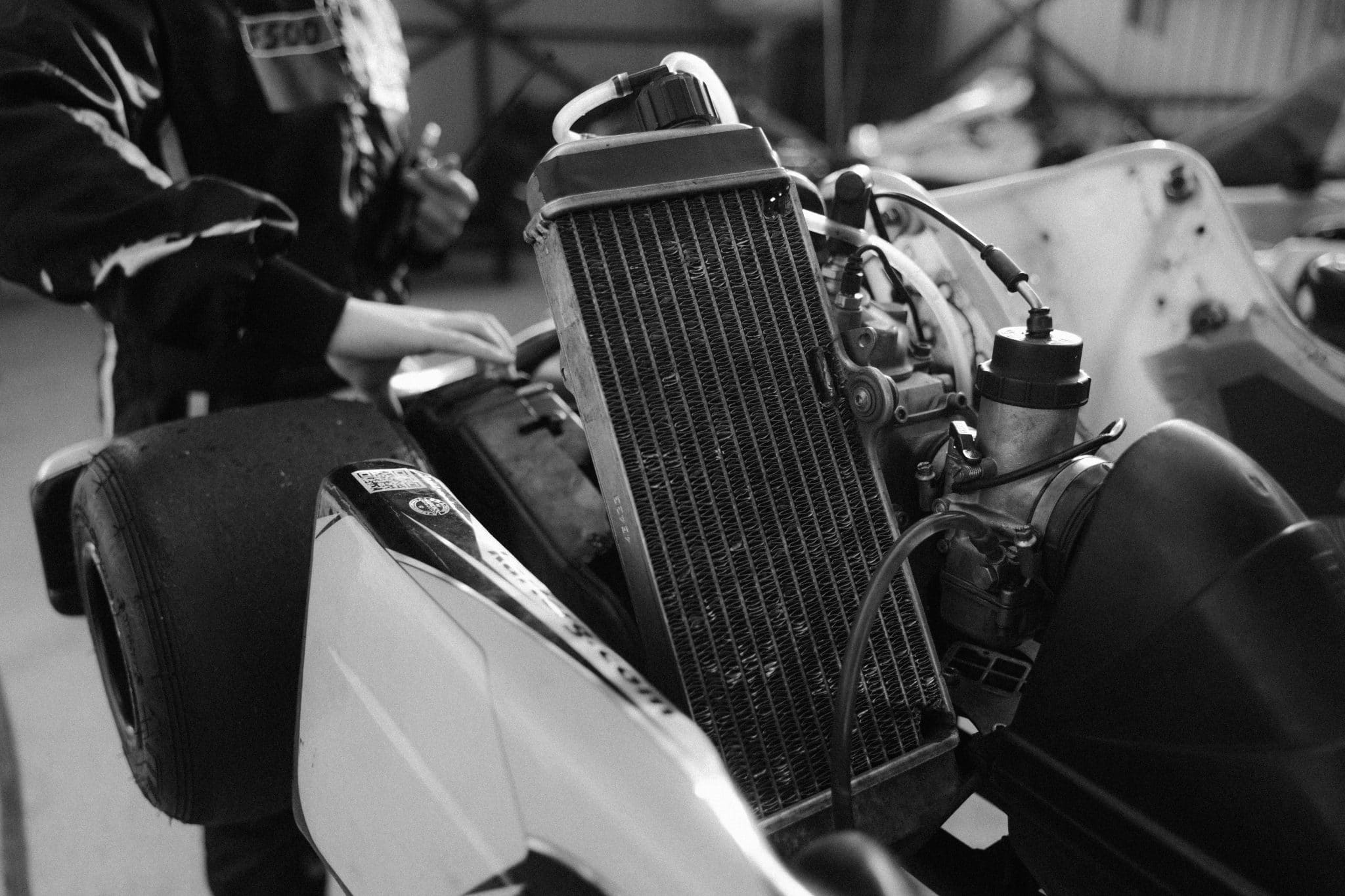Ever wondered how many gallons your bathtub holds?
Most homeowners have no idea how many gallons are in a bathtub, leading to higher water bills and inefficient water usage.
Without knowing your tub’s capacity, you’re missing out on opportunities to save money and make smarter water choices.
This blog will show you exactly how to determine your bathtub’s capacity and use this information to reduce your monthly utility costs.
You’ll learn about different bathtub types and their typical capacities, discover simple methods to calculate how many gallons are in a bathtub for your specific model, and get practical tips for water conservation.
By the end, you’ll know how to make informed decisions about your water usage, compare baths versus showers, and choose the right fixtures for your home.
Knowing Your Bathtub’s Water Capacity for Efficiency
Knowing how many gallons a bathtub holds can significantly impact your household’s water usage, utility bills, and environmental footprint.
A standard bathtub holds between 40 and 60 gallons of water when filled to capacity. This number changes dramatically based on your tub’s type, size, and shape.
Understanding your bathtub’s capacity helps you control your monthly water costs effectively and plan for hot water heater requirements.
This knowledge also enables you to make better choices for the environment while budgeting accurately for home renovations.
Additionally, knowing your tub’s capacity allows you to compare water usage between baths and showers, helping you choose the most efficient bathing option for your household.
How Many Gallons in a Bathtub by Type?
Bathtubs come in various shapes, sizes, and styles, and each type has a different water-holding capacity. The gallon measurement is essential because it helps determine how much water is required to fill a tub and can also affect water usage and heating costs.
Understanding the number of gallons in a bathtub by type can help consumers make informed decisions based on their preferences for water conservation, bathing comfort, and overall bathtub size.
The most common types of bathtubs include standard tubs, soaking tubs, whirlpool tubs, and corner tubs, each with its own typical gallon range
| Bathtub Type | Capacity Range | Average Capacity |
|---|---|---|
| Standard Alcove | 40-60 gallons | 50 gallons |
| Freestanding | 50-80 gallons | 65 gallons |
| Corner | 60-75 gallons | 68 gallons |
| Clawfoot | 60-80 gallons | 70 gallons |
| Walk-in | 40-60 gallons | 50 gallons |
| Two-Person | 80-110+ gallons | 95 gallons |
1. Standard Alcove Bathtubs
Standard alcove bathtubs are the most common type found in residential homes.
These three-walled tubs fit snugly into bathroom alcoves and work well for families with limited space.
They measure approximately 60 inches long and 30 inches wide, making them ideal for most standard bathroom layouts.
2. Freestanding Bathtubs
Freestanding bathtubs offer more design flexibility and serve as bathroom focal points.
These tubs come in various shapes, from oval to rectangular, with modern designs often featuring sleek lines while vintage-inspired models offer classic charm.
They require more floor space but provide better access from all sides.
3. Corner Bathtubs
Corner bathtubs maximize space efficiency in smaller bathrooms while providing a more spacious bathing experience.
These triangular or curved tubs fit into bathroom corners and often include built-in seating or armrests.
They work particularly well in master bathrooms where space optimization is important.
4. Clawfoot Bathtubs
Traditional clawfoot bathtubs are known for their vintage appeal and deeper soaking experience.
These freestanding tubs feature decorative feet and often have higher sidewalls than modern alternatives.
They create a classic bathroom centerpiece but require more maintenance and floor space.
5. Walk-In Bathtubs
Walk-in bathtubs are designed specifically for accessibility and safety.
These tubs feature low-threshold doors and often include built-in seating, grab bars, and non-slip surfaces.
Their deeper construction accommodates users with mobility challenges while providing therapeutic benefits.
6. Two-Person Bathtubs
Two-person or oversized bathtubs prioritize luxury and comfort over efficiency.
These models are significantly longer and wider than standard tubs, often featuring contoured designs for two people.
They work best in spacious master bathrooms with adequate structural support.
How to Calculate Your Bathtub’s Capacity
Want to know exactly how many gallons are in a bathtub for your specific model? These simple calculation methods give you accurate measurements for your water usage planning and cost calculations.
Formula Method (Most Accurate for Regular Shapes)
Step 1: Measure interior dimensions in inches (length × width × depth)
Step 2: Multiply all three numbers = cubic inches
Step 3: Divide by 231 (cubic inches per gallon) = maximum capacity
Step 4: Subtract 10-15% for practical bathing capacity
Example: 60″ × 30″ × 16″ = 28,800 cubic inches 28,800 ÷ 231 = 125 gallons maximum Practical capacity = 105-110 gallons
Bucket Method (Most Accurate for Actual Use)
Step 1: Use a measured container (1-gallon or 5-gallon bucket)
Step 2: Fill your empty bathtub to a normal bathing level
Step 3: Count how many containers you used
Step 4: Multiply containers × gallon size = actual capacity
Example: Using a 5-gallon bucket, it takes 9 buckets to fill your tub to comfortable bathing level 9 buckets × 5 gallons = 45 gallons actual capacity
Bathtub Gallons: Cost and Conservation Benefits
Understanding how many gallons in a bathtub directly impacts your wallet and water conservation efforts. Here are the key benefits of knowing your bathtub’s capacity:
- Compare water usage: 50-gallon bath vs. 25-40-gallon shower (10 minutes)
- Choose the most water-efficient bathing option for your household
- Make smarter decisions about bath vs. shower usage
- Water costs: Average $1.50 per 1,000 gallons
- 50-gallon bath costs 7-8 cents in water charges
- Hot water heating adds 20-35 cents per bath
- Total bath cost: 27-43 cents, depending on energy source
- Choose the right water heater size for your needs
- Plan plumbing upgrades appropriately
- Calculate structural support requirements
- Select fixtures that match your usage patterns
- Estimate total project costs accurately
Gallons in a Bathtub vs. Shower Usage
Now that you know the costs and benefits, let’s compare how many gallons are in a bathtub versus shower usage to help you make the best choice for your household:
| Bathing Method | Water Usage | Duration | Cost Range | Best For |
|---|---|---|---|---|
| Full Bath | 40-80 gallons | 5-10 min fill | 25-40 cents | Relaxation, deep cleaning |
| Partial Bath | 25-40 gallons | 3-5 min fill | 15-25 cents | Quick soak, water savings |
| Standard Shower | 25-40 gallons | 10 minutes | 15-30 cents | Daily cleaning routine |
| Quick Shower | 15-25 gallons | 6-8 minutes | 10-20 cents | Fast, efficient cleaning |
| Low-Flow Shower | 15-25 gallons | 10 minutes | 10-20 cents | Water conservation |
| Long Shower | 50+ gallons | 15+ minutes | 30+ cents | Avoid for efficiency |
Key Takeaways
Quick showers (6-8 minutes) or low-flow showerheads are the most water-efficient options, while partial baths or quick showers save 40-60% on water costs compared to full baths.
Since water heating accounts for 12-18% of home energy costs, your best strategy is to alternate between efficient showers and occasional baths to balance comfort with conservation.
Choosing the Right Bathtub for Your Needs
Selecting the ideal bathtub isn’t just about style—it’s a balance of space, structure, lifestyle, and functionality. This section helps you match your bathing preferences with practical considerations to ensure lasting comfort and efficiency.
Space and Structural Considerations: Bathtub size must match your bathroom’s layout and structural support. A full tub can weigh 500–800+ pounds, so ensure your floor can handle the load. Also factor in plumbing, door clearance, and installation access.
User Lifestyle and Preferences: Your bathing habits matter. Daily bathers may prefer larger tubs, while occasional users benefit from compact, water-efficient models. Consider your household size, mobility needs, hot water capacity, and utility budget.
Balancing Luxury and Function: Aim for a tub that offers comfort without excessive water or energy use. Moderately sized tubs often deliver the best mix of luxury, efficiency, and long-term value.
Whether you’re remodeling or building new, the right tub should enhance your lifestyle without compromising practicality.
Final Thoughts
Understanding how many gallons are in a bathtub helps you control water costs and make smarter household decisions.
Knowing your capacity helps compare bath and shower costs for any tub size, from standard alcove tubs to luxurious two-person models, and reduces monthly utility bills.
The simple calculation methods and conservation tips in this guide can help you save hundreds of dollars annually while reducing your environmental impact. From choosing efficient fixtures to adjusting bathing habits, small changes add up to significant savings.
Ready to take control of your water usage? Start by measuring how many gallons are in a bathtub using the bucket method, then implement the conservation strategies that work best for your household. Your wallet will thank you.

